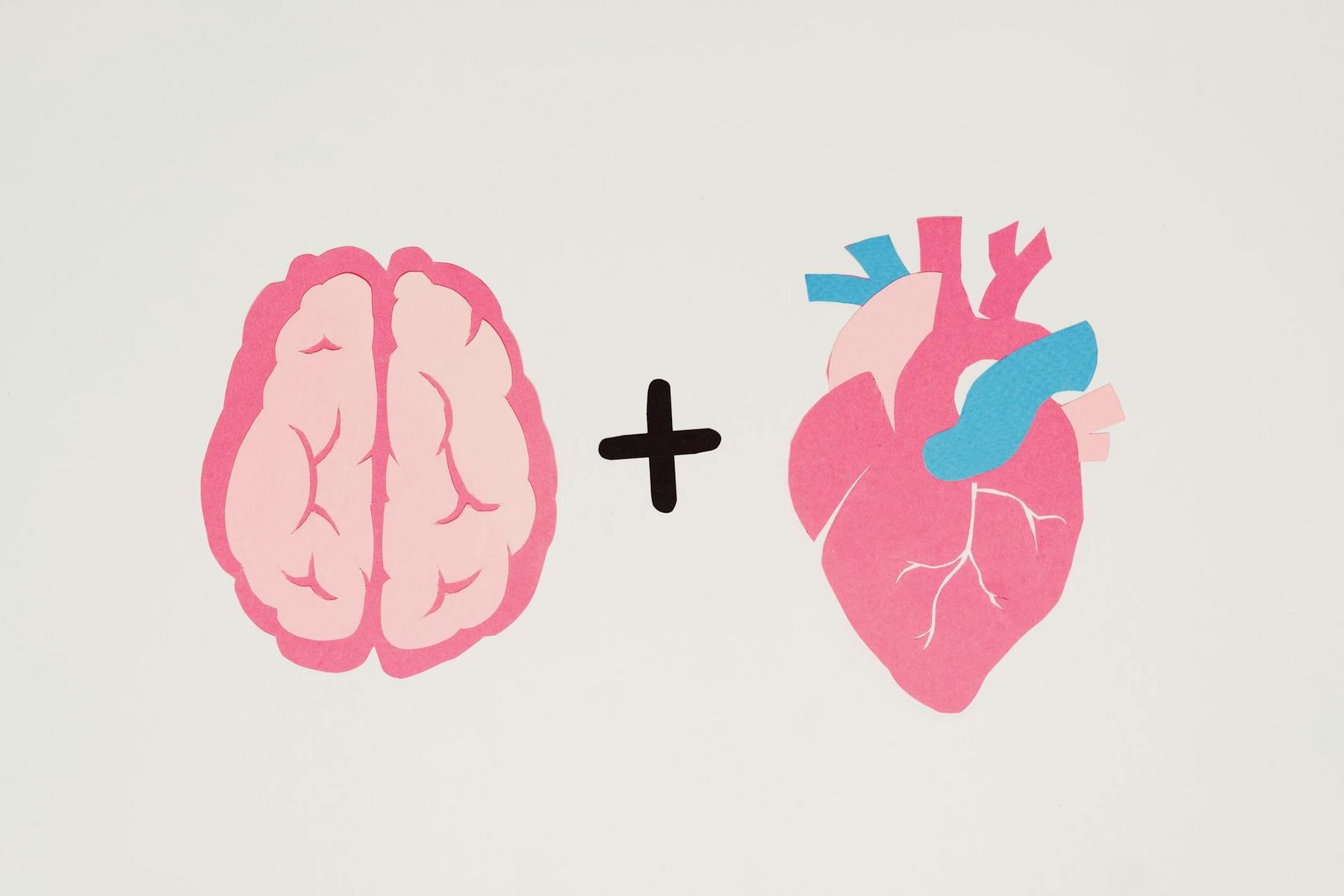The narrative surrounding stress biology has long been dominated by a single protagonist: cortisol. Yet this oversimplification obscures a sophisticated orchestra of chemical messengers that collectively govern how our bodies perceive, process, and respond to stressors. When we examine the intricate hormonal cascade triggered during acute and chronic stress, we uncover a network of signalling molecules—each with distinct roles, timelines, and physiological consequences—that extend far beyond the widely recognised “stress hormone.” For healthcare professionals and informed individuals seeking to comprehend the full scope of stress physiology, understanding this broader hormonal landscape proves essential for recognising how prolonged activation of these systems influences metabolic function, cardiovascular health, immune response, and psychological wellbeing.
What Hormones Comprise the Complete Stress Response System?
The body’s stress response system operates through two primary pathways: the hypothalamic-pituitary-adrenal (HPA) axis and the sympathetic-adrenal-medullary (SAM) system. Each pathway releases distinct hormonal messengers that work in concert to prepare the body for immediate action whilst simultaneously triggering longer-term adaptive responses.
The SAM system initiates the immediate stress response, releasing catecholamines—adrenaline (epinephrine) and noradrenaline (norepinephrine)—within seconds of perceiving a threat. These hormones increase heart rate, redirect blood flow to muscles, dilate airways, and heighten sensory awareness. The effects manifest rapidly but typically dissipate within minutes once the stressor resolves.
Simultaneously, the HPA axis begins a more measured cascade. The hypothalamus releases corticotropin-releasing hormone (CRH), which stimulates the pituitary gland to secrete adrenocorticotropic hormone (ACTH). This, in turn, prompts the adrenal glands to produce cortisol alongside other steroid hormones. This sequence unfolds over minutes to hours, creating sustained physiological changes that support prolonged coping mechanisms.
Beyond these primary pathways, additional hormones modulate the stress response. Vasopressin, also known as antidiuretic hormone, works synergistically with CRH to enhance ACTH release whilst regulating fluid balance. Prolactin levels increase during stress, potentially affecting immune function and metabolic processes. Dehydroepiandrosterone (DHEA), another adrenal steroid, appears to counterbalance some of cortisol’s effects, though its precise role in stress physiology remains an active area of investigation.
How Do Different Stress Hormones Affect Metabolic and Physiological Processes?
Each stress hormone exerts specific metabolic and physiological effects, collectively altering how the body allocates energy, maintains homeostasis, and prioritises survival functions over growth and repair processes.
Catecholamines (Adrenaline and Noradrenaline) drive the rapid mobilisation of glucose and fatty acids from storage sites, providing immediate fuel for muscular and neural activity. They increase metabolic rate, elevate blood pressure, and enhance cognitive alertness. However, chronic elevation of these hormones contributes to cardiovascular strain, including sustained hypertension and increased risk of arrhythmias.
Cortisol influences virtually every organ system. It promotes gluconeogenesis (glucose production from non-carbohydrate sources), suppresses insulin sensitivity, and facilitates protein breakdown to provide amino acids for energy production. Cortisol also modulates immune function, initially enhancing certain inflammatory responses but ultimately suppressing immune activity during prolonged elevation. This immunosuppressive effect explains why chronic stress correlates with increased susceptibility to infections and delayed wound healing.
CRH and ACTH serve primarily as regulatory signals rather than direct effectors, yet they influence behaviour and physiology independently of their role in cortisol production. CRH affects appetite regulation, sleep-wake cycles, and anxiety-related behaviours. ACTH influences skin pigmentation and may affect cognitive processes.
Vasopressin maintains fluid balance by promoting water retention in kidneys, particularly important during stress when the body prioritises cardiovascular stability. Elevated vasopressin during chronic stress may contribute to fluid retention and blood pressure dysregulation.
Thyroid Hormones interact bidirectionally with the stress response. Whilst not traditionally classified as stress hormones, thyroxine (T4) and triiodothyronine (T3) production can be suppressed during chronic stress, reducing metabolic rate and potentially contributing to fatigue, weight changes, and mood alterations.
Why Does Chronic Stress Hormone Elevation Create Health Complications?
The hormonal stress response evolved to support short-term survival during acute threats—scenarios where rapid physiological changes offer clear adaptive advantages. Modern life, however, often subjects individuals to prolonged or repeated stressors without corresponding physical resolution, leading to persistent hormonal activation that the body was never designed to sustain.
Prolonged cortisol elevation disrupts the delicate balance of numerous physiological systems. Sustained glucocorticoid exposure impairs hippocampal function, affecting memory formation and emotional regulation. Chronic cortisol excess promotes visceral adiposity (abdominal fat accumulation) whilst simultaneously increasing insulin resistance, creating metabolic conditions that predispose individuals to type 2 diabetes and cardiovascular disease.
The cardiovascular system experiences particular strain from chronic stress hormone activation. Persistent catecholamine elevation maintains elevated heart rate and blood pressure, accelerating arterial aging and promoting atherosclerotic plaque formation. Research demonstrates clear associations between chronic stress and increased risk of myocardial infarction, stroke, and heart failure.
Immune dysfunction represents another significant consequence. Whilst acute stress may temporarily enhance certain immune responses, chronic elevation of cortisol and other stress hormones suppresses both innate and adaptive immunity. This manifests as increased susceptibility to infections, reduced vaccine efficacy, and potentially altered cancer surveillance mechanisms.
The reproductive and growth axes also suffer under chronic stress hormone influence. Elevated cortisol suppresses gonadotropin-releasing hormone, reducing sex hormone production in both males and females. This can manifest as menstrual irregularities, reduced fertility, and decreased libido. Growth hormone secretion similarly diminishes, potentially affecting tissue repair and metabolic function.
What Role Do Counterregulatory Hormones Play in Stress Adaptation?
The body possesses inherent mechanisms to counterbalance stress hormone effects, preventing unchecked activation that would prove unsustainable. These counterregulatory systems demonstrate the sophisticated homeostatic capabilities of human physiology.
DHEA represents one such counterbalance, exhibiting properties that oppose certain cortisol effects. Often termed the “anti-stress hormone,” DHEA supports immune function, neuroplasticity, and metabolic health. The cortisol-to-DHEA ratio may serve as a more informative indicator of stress adaptation than cortisol levels alone, with elevated ratios suggesting compromised resilience.
Endorphins and Enkephalins, the body’s endogenous opioid peptides, increase during stress to modulate pain perception and promote a sense of wellbeing despite challenging circumstances. These molecules interact with the same receptor systems as external opioids but are produced naturally in response to physical exertion, stress, and certain social interactions.
Oxytocin, traditionally associated with childbirth and social bonding, also functions as a stress buffer. Research indicates that oxytocin can dampen the HPA axis response, reduce anxiety, and promote social connection behaviours that may help individuals cope with stressors through community support.
Serotonin levels influence both stress perception and response. Whilst serotonin itself is not released specifically during stress, the stress response affects serotonin metabolism and receptor sensitivity. Adequate serotonin function appears protective against stress-related mood disorders, whilst serotonin dysregulation may amplify stress vulnerability.
The interplay between stress-inducing and stress-buffering hormones creates a dynamic equilibrium. When this balance shifts persistently toward activation without adequate counterregulation, the physiological and psychological consequences of chronic stress become apparent.
How Can Hormonal Stress Patterns Be Assessed and Understood?
Understanding individual stress hormone patterns requires assessment methods that capture both absolute hormone levels and their temporal dynamics. Unlike many hormones that maintain relatively stable concentrations, stress hormones exhibit pronounced circadian rhythms and acute responsivity to environmental stimuli.
Cortisol follows a predictable diurnal pattern in healthy individuals, peaking shortly after waking (the cortisol awakening response) and declining progressively throughout the day to reach nadirs during early sleep. Disruption of this rhythm—whether through flattened curves, elevated evening levels, or blunted morning peaks—provides insight into HPA axis dysregulation potentially more informative than single-point measurements.
Catecholamines prove more challenging to assess due to their rapid fluctuations and short half-lives. These hormones can increase dramatically within seconds and return to baseline minutes later, making their measurement highly context-dependent.
DHEA and its sulfated form (DHEA-S) exhibit greater stability, making them more amenable to single-point assessment. The cortisol-to-DHEA ratio has gained attention as a potential biomarker of stress adaptation capacity, though standardised interpretation guidelines remain under development.
Multiple biological matrices—blood, saliva, urine, and hair—each offer distinct advantages for hormone assessment. Salivary testing captures free (biologically active) cortisol and reflects levels at the time of collection, making it useful for assessing diurnal rhythms. Urinary measurements integrate hormone production over hours, whilst hair analysis provides a retrospective window into average hormone exposure over weeks to months.
| Hormone | Primary Function | Onset of Action | Duration of Effect | Primary Measurement Matrix |
|---|---|---|---|---|
| Adrenaline/Noradrenaline | Immediate mobilisation, cardiovascular activation | Seconds | Minutes | Blood, urine |
| CRH | Initiates HPA axis cascade | Minutes | Hours | Rarely measured clinically |
| ACTH | Stimulates cortisol production | Minutes | Hours | Blood |
| Cortisol | Sustained metabolic adaptation | Minutes to hours | Hours to days | Saliva, blood, urine, hair |
| Vasopressin | Fluid balance, ACTH potentiation | Minutes | Hours | Blood |
| DHEA | Cortisol counterbalance | Hours | Days | Blood, saliva |
What Factors Influence Individual Stress Hormone Response Patterns?
Considerable variability exists in how individuals respond hormonally to identical stressors, reflecting the complex interplay of genetic predisposition, developmental history, current physiological state, and psychosocial factors.
Genetic polymorphisms in genes encoding stress hormone receptors, synthetic enzymes, and metabolic pathways contribute to this variability. For instance, variations in the glucocorticoid receptor gene affect cortisol sensitivity, influencing both HPA axis setpoint and responsiveness to feedback regulation. Similarly, polymorphisms affecting catecholamine metabolism alter individual vulnerability to anxiety-related disorders and cardiovascular reactivity.
Early life experiences exert profound and potentially lifelong influences on stress hormone systems. Adverse childhood experiences can programme HPA axis function, often resulting in altered setpoints that persist into adulthood. Conversely, supportive early environments appear to promote stress resilience through mechanisms that may include epigenetic modifications to stress response genes.
Current physiological states significantly modulate stress hormone patterns. Sleep deprivation elevates cortisol, whilst circadian rhythm disruption fundamentally alters the temporal patterning of stress hormones. Nutritional status affects hormone production capacity, with caloric restriction, macronutrient imbalance, and micronutrient deficiencies all influencing stress hormone synthesis and metabolism.
Age represents another critical factor. The stress response system undergoes substantial changes across the lifespan. Children typically exhibit more pronounced cortisol reactivity to novel situations, whilst aging often associates with elevated basal cortisol and reduced diurnal variation—a pattern termed “cortisol drift” that may contribute to age-related health complications.
Sex differences in stress hormone patterns reflect both hormonal and neurobiological distinctions. Oestrogen and progesterone influence HPA axis function, creating menstrual cycle-related variations in stress reactivity. Beyond reproductive hormones, fundamental differences in neural stress circuitry may contribute to sex-specific vulnerabilities to stress-related conditions.
Integrating Stress Hormone Knowledge into Holistic Health Perspectives
Recognition that stress biology extends far beyond cortisol necessitates a more nuanced understanding of how chronic activation affects health and wellbeing. The interconnected nature of the stress hormone network means that sustained dysregulation in one component inevitably influences others, creating cascading effects across multiple physiological systems.
This systemic perspective aligns with emerging healthcare approaches that prioritise understanding the whole person rather than isolated symptoms or single biomarkers. When healthcare professionals consider the full spectrum of stress hormones alongside lifestyle factors, genetic predispositions, and psychosocial contexts, more comprehensive pictures of individual health trajectories emerge.
The recognition of counterregulatory systems highlights the body’s inherent capacity for self-regulation and adaptation. Supporting these natural resilience mechanisms—rather than focusing exclusively on suppressing stress responses—represents a fundamental shift in conceptualising stress management.
For individuals navigating the complexities of modern stressors, understanding this broader hormonal landscape empowers more informed decision-making regarding lifestyle modifications, environmental adjustments, and when to seek professional guidance. Recognising symptoms of chronic stress hormone dysregulation enables earlier intervention before profound physiological consequences develop.
What is the difference between acute and chronic stress hormone activation?
Acute stress hormone activation represents the body’s adaptive response to immediate challenges, characterised by rapid catecholamine release followed by measured cortisol elevation. This pattern resolves naturally once the stressor passes, typically within hours. Chronic stress hormone activation occurs when the stress response system remains engaged persistently or reactivates frequently without adequate recovery periods. This sustained activation disrupts normal hormone rhythms, exhausts counterregulatory mechanisms, and creates the metabolic, cardiovascular, and immunological complications associated with long-term stress exposure.
Can stress hormones affect weight and metabolism directly?
Stress hormones exert profound and direct effects on weight regulation and metabolic function. Cortisol promotes visceral fat accumulation whilst simultaneously inducing insulin resistance, creating conditions that favour weight gain particularly in the abdominal region. Stress hormones also influence ghrelin (the hunger hormone) and leptin (the satiety hormone), often increasing appetite whilst diminishing satisfaction from eating. Catecholamines acutely increase metabolic rate but chronic elevation may lead to metabolic dysregulation. The collective effect of stress hormone dysregulation frequently manifests as unexplained weight changes, difficulty maintaining healthy body composition, and altered energy balance.
How long does it take for stress hormones to return to normal after chronic stress?
The recovery timeline for stress hormone normalisation following chronic stress varies considerably depending on the duration and intensity of stress exposure, individual physiological reserve, and active recovery support. In general, catecholamine levels may normalise within days once stressors resolve, whilst cortisol patterns typically require weeks to months for complete rhythm restoration. The HPA axis demonstrates remarkable plasticity but may require sustained periods of reduced stress load to fully recalibrate. Some research suggests that profound or prolonged stress exposure may create lasting changes in stress hormone setpoints, though the reversibility of these alterations remains an active area of investigation.
Are there specific times of day when stress hormone testing is most informative?
Optimal timing for stress hormone assessment depends on which aspects of the stress response system require evaluation. For cortisol, morning measurements (ideally within 30-60 minutes of waking) capture the cortisol awakening response, whilst evening measurements assess the normal decline that should occur. Multiple time-point sampling throughout the day provides the most comprehensive picture of diurnal rhythm integrity. DHEA exhibits less pronounced diurnal variation, making morning sampling conventional but less timing-critical. Catecholamines, given their rapid fluctuations, prove most informative when measured during or immediately following stress exposure, though this proves logistically challenging in clinical settings.
Do stress hormones interact with other endocrine systems?
Stress hormones extensively interact with virtually all other endocrine systems, reflecting the body’s integrated approach to physiological regulation. The HPA axis directly influences thyroid function, with chronic stress potentially suppressing thyroid hormone production. Stress hormones substantially affect reproductive hormone systems, with elevated cortisol suppressing luteinising hormone and follicle-stimulating hormone secretion, consequently reducing sex hormone production. Growth hormone release diminishes during chronic stress, whilst stress hormones also influence pancreatic insulin secretion and peripheral insulin sensitivity. These interconnections explain why stress-related symptoms often manifest across multiple body systems simultaneously rather than remaining confined to a single physiological domain.













